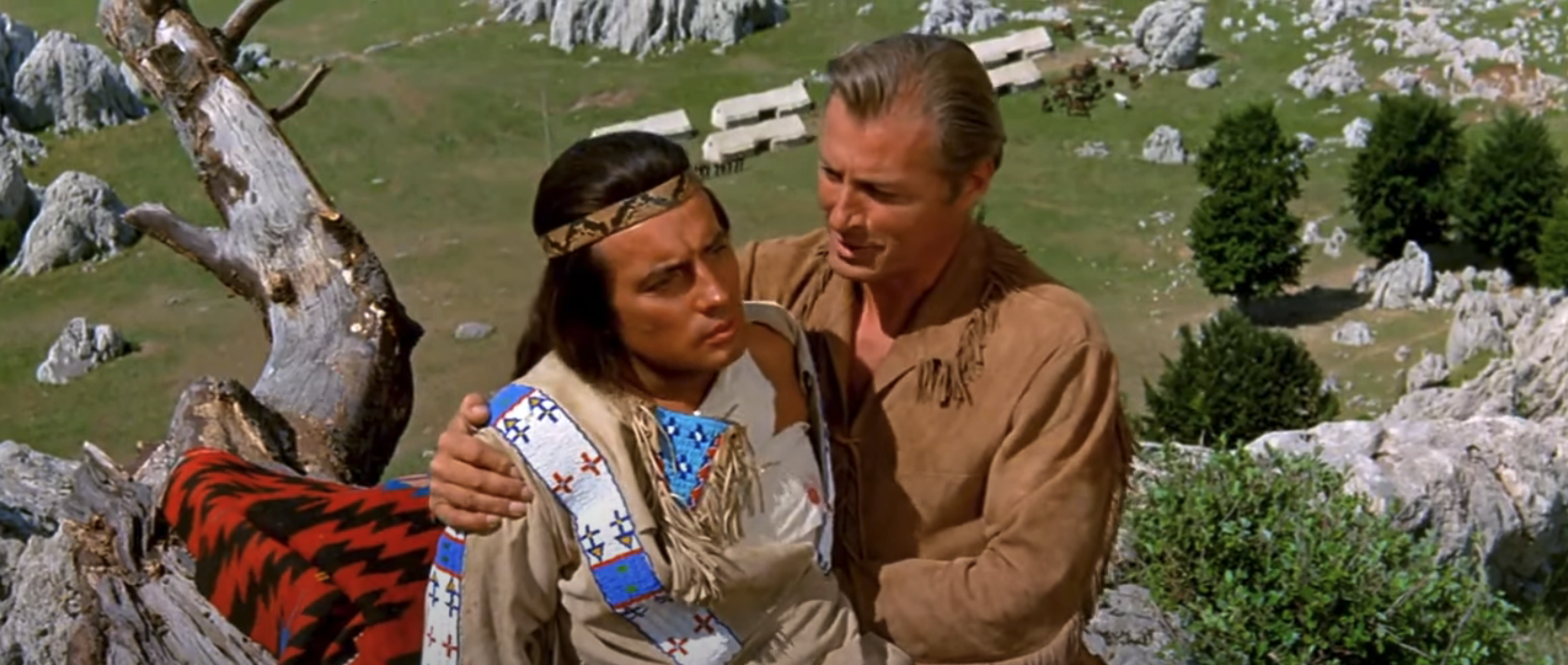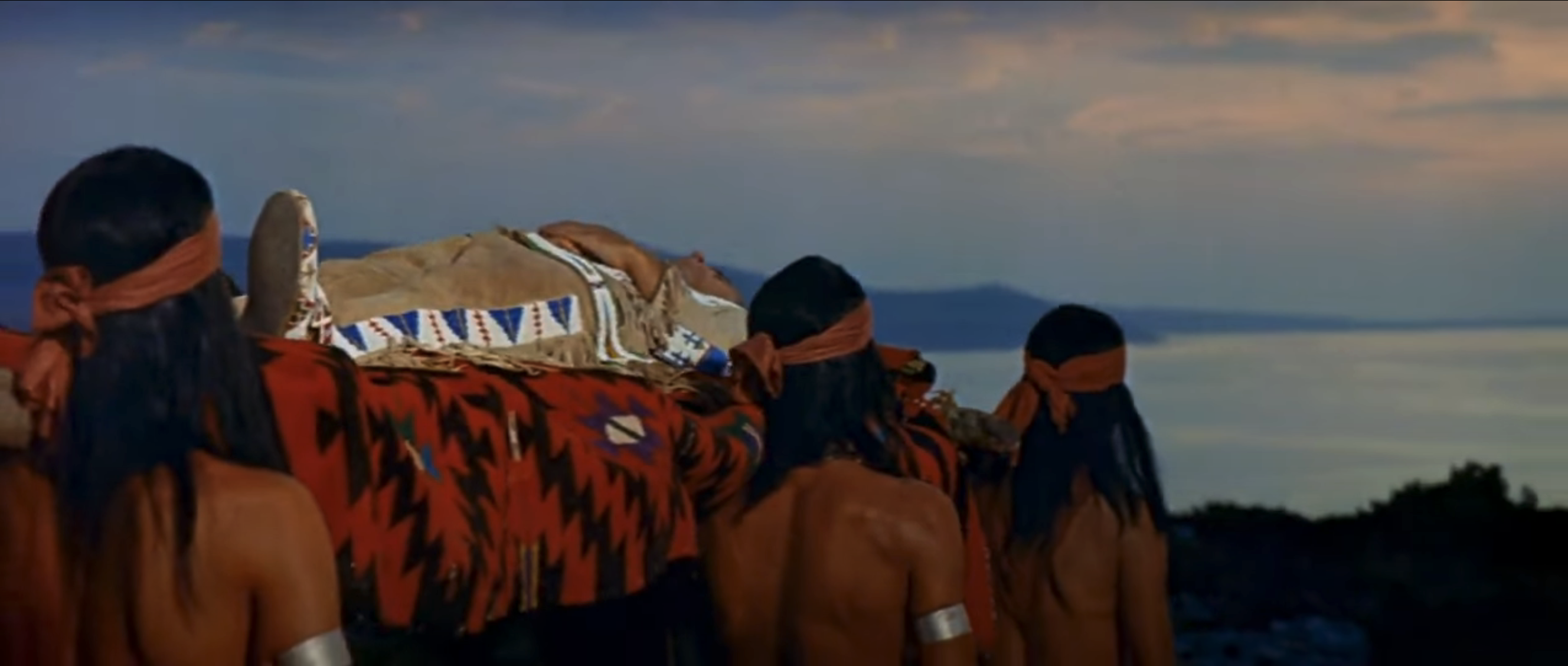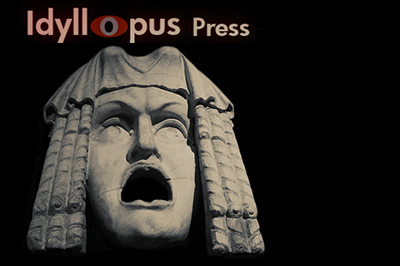
Karl May (1842 to 1912) was a prodigious German author of American Western fiction during the late nineteenth century, and it well may be you've never heard of him if you're American, though in Germany he was and is still wildly popular. May was part con man who represented himself as having not only traveled the American West, but that he was actually Old Shatterhand, his fictional adventurer, the white blood-brother of fictional Apache Chief Winnetou (I keep thinking Wittenou) and that Shatterhand's experiences were his own. In truth, while May did eventually visit America, he ventured no further than New York. His fiction was informed by other writers who had visited the American West, and my scant, negligible acquaintance with May's work reveals a person whose fiction communicates as neither based in personal experience nor well-informed, though I suppose one could hazard he was tolerably well-informed for a German who had no first-hand experience. But I'm speaking of his manner of voice. These are works of fantasy and the particulars of place and culture and people beg not to be examined.
How May came to be so popular must have something to do with his ability as a charlatan, also to project a world people wanted, and he took care to depict a view of the American West that was then popular and making its rounds in Europe via circuses and Wild West shows. Because I've not read but a few chapters of his works, I can't really comment on them, but his popularity began at a time when Wagner's (1813 to 1883) star was ascending, as well as a German nationalism into which is woven its return-to-nature movement and the worship of the perfected Aryan, and the American Indian represented at least a part of that fundamental and perfected human. Karl May said, "in place of the Yankees, a new man will emerge whose soul is German-Indian", and I have no idea at all what he meant by that because none of it is at all adequately sensible.
He was said to be Hitler's favorite author, and that somehow this romanticized American West was in part a model for the Third Reich, yet Hitler also researched America's use of reservations for American Indians for the formation of his extermination camps. Karl May's works were able to transcend WWII, despite Hitler's affection for him (May was also a favorite of Albert Einstein) and I've been glancing through some of the German movies made in the 1960s based on the adventures of Shatterhand and Winnetou. The female protagonist may be an Indian woman (no American Indians appeared in the films which were made in Croatia) but for some reason I always feel like I'm watching a version of Sissi, wild and free, riding her horse, the Empress of Austria who was sentimentalized on the German screen in the 1950s in escapist films, a return to the good old days of the monarchy, her historical character remade into a folk hero wholly harmonized with nature. When Chief Winnetou dies, he is carried on a bier toward a great inland sea over which the sun sets and I expect him to be placed in a Viking boat and pushed out to sea.

There is nothing about these films that remind of American Westerns, and it isn't just because there are a lot of "Indians" whereas in American Westerns the Native American is a relatively rare occurrence and to be avoided. Like the Sissi films, these are in the Heimatfilm genre, grittiness and danger sublimated to the sentimentality of a lost Eden that persists in the great beyond. White civilization encroaches, and there's plenty of violence, but the dangers are postcard gloss, not even death is very personal. They are escapist films in which real-life problems fall away as one enters a myth, a place outside of time though it's supposed to have to do with 19th-century America, and many of the problems confronted are 19th-century concerns, but it all feels like one can easily take a break from any difficulty, go have lunch at a nice restaurant in Sedona, and then return to continue with the good time had with adventuring in a very pretty place. Bang bang, someone dies, and there's no tension at all. Isn't the landscape beautiful? Then cut to upbeat big-sky orchestral music. Eat popcorn. Take a sip of your drink. Say, "Oh, pretty colors. Those pretty colors feel good. That upbeat music feels good. Look, the wagon's on fire. It doesn't matter at all. No tension. No stress. No anxiety. Come to think of it, this is kind of like a drug...? I feel sedated."
Karl May's works continue to be produced in Germany but as plays in festivals. If one jumps to 1:04:19 in the below film of such a production, one enters just as a Native American dance is performed. Supposedly Native American. But not. And the music is "Adiemus" from Karl Jenkins' "Songs of Sanctuary", which was first used in a Delta commercial and became so popular that it birthed an album. It was what would have been called New Age music in 1994, the year it was recorded. At first, I was, "WTH?" And then I thought, y'know, maybe this is as it should be. Maybe it's better not to confuse issues with any Native American music or dancing, which would presumably be Assiniboine as I read this is supposed to be taking place in an Assiniboine village on the banks of the Quicourt River. Maybe this is just as it should be that they are instead moving about to "Adiemus". After all, there's something like a PNW totem pole sitting right smack dab in the middle of the set. The Assiniboine didn't have totem poles. Maybe they are being intentionally emphatically incorrect in order to communicate, "Don't be mistaken, this isn't Native American"? I've no idea. Whatever, it's working for them. In their 7500 seat theater they entertained a record audience of 450,000 their summer season of 2024 which was from June 30th to September 9th. I don't know how many performances a week.
But, really, why is a totem pole there? Well, a totem pole was a feature in the 1965 Wittenou: The Last Shot

Admittedly, this feels a trifle bizarre, a large outdoor theater in Germany that has been pretty much committed to Karl May performances since 1952. And these are big productions. Lots of performers. Horses. It certainly speaks to the continued popularity of Karl May and his fictionalization of the American West.
Feb 2025 (originally published on FB Sep 2024)
Return to top of page
Link to the index page for all the analyses

